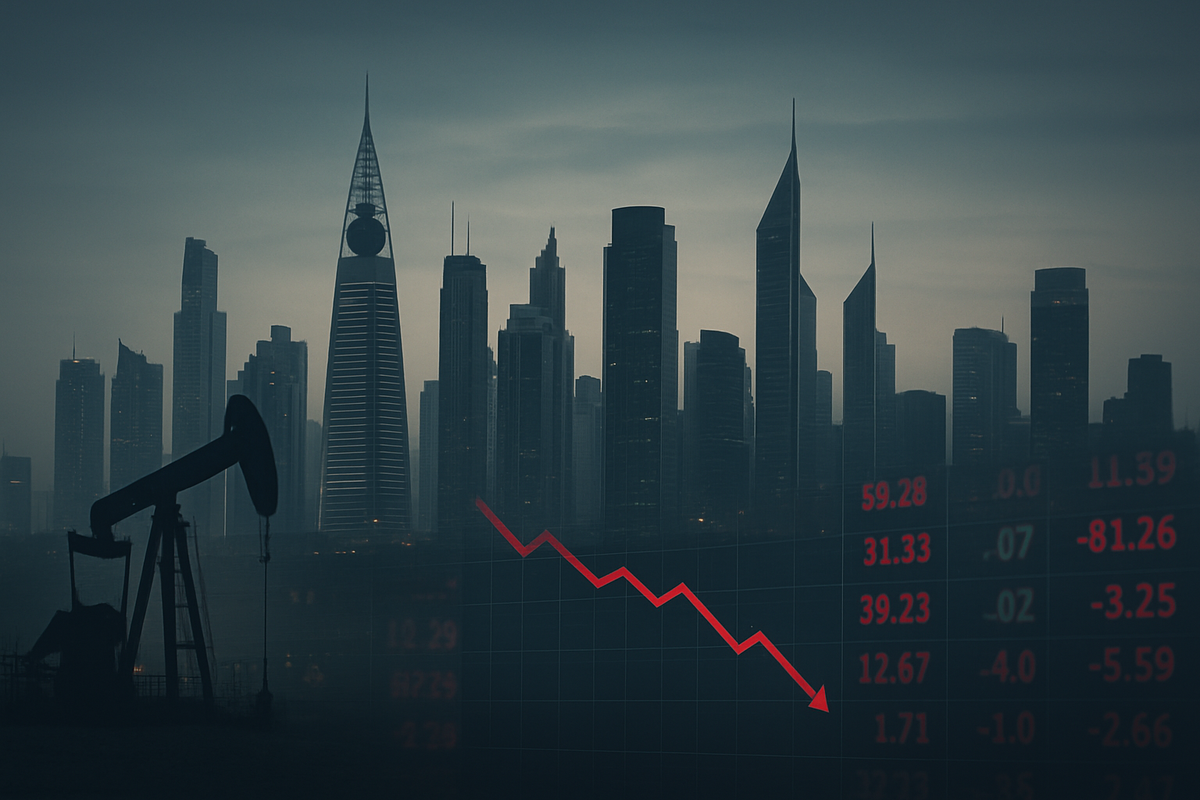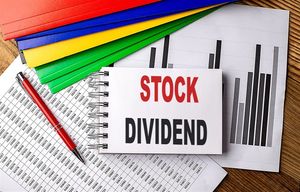
The Gulf stock markets are currently navigating a turbulent period, marked by a dual challenge of subdued oil prices and an inconsistent landscape of corporate earnings. This confluence of factors has cast a shadow over regional exchanges, leading to widespread investor caution and fluctuating market performance across the major bourses of the Gulf Cooperation Council (GCC). While some markets and companies have shown resilience, the overarching sentiment remains one of uncertainty as economies grapple with their reliance on hydrocarbon revenues and the broader implications of global economic shifts. Investors are keenly observing the interplay between global energy dynamics and regional corporate health, as these elements dictate the immediate trajectory and long-term prospects of the Gulf's financial landscape.
A Perfect Storm: Weak Oil and Disappointing Profits Cloud Gulf Bourses
The current struggles in Gulf stock markets are a direct consequence of a challenging macroeconomic environment exacerbated by specific regional dynamics. Over recent months, crude oil prices have remained soft, failing to sustain significant upward momentum despite occasional geopolitical tremors or hopes for policy interventions. Concerns about rising global oil supply have largely capped any potential gains, keeping a lid on the primary revenue stream for many Gulf nations. This persistent weakness in oil prices directly translates into reduced government revenues, which in turn can impact public spending, project development, and overall economic liquidity – all vital components for market confidence.
Compounding the oil price woes are the mixed and often disappointing corporate earnings reported by numerous listed entities across the GCC. While some companies have managed to defy the trend, a significant number have fallen short of profit forecasts, leading to declines in their stock values. For instance, in Saudi Arabia, major banking institutions like Al Rajhi Bank (TADAWUL: 1120) and Saudi National Bank (TADAWUL: 1180) have experienced drops. Similarly, petrochemical giant Saudi Basic Industries Corp (SABIC) (TADAWUL: 2010) and renewable energy firm ACWA Power Company (TADAWUL: 2082) have seen declines following underwhelming quarterly results. In Dubai, blue-chip developer Emaar Properties (DFM: EMAAR) and leading lender Emirates NBD (DFM: EMIRATESNBD) have also faced pressure. Even in Abu Dhabi, where the market has shown some resilience, Aldar Properties (ADX: ALDAR) and Abu Dhabi Islamic Bank (ADX: ADIB) have faced headwinds. This inconsistent performance paints a picture of uneven economic recovery and heightened sensitivity to operating costs and consumer demand in a subdued environment.
The timeline leading to this juncture has seen a gradual erosion of optimism. Throughout late 2024 and into 2025, global economic growth concerns, coupled with sustained production levels from major oil producers and a cautious approach from OPEC+, have kept oil prices from breaking out decisively. This period also coincided with a series of corporate earnings reports that, on balance, failed to inspire investor confidence. Key players and stakeholders involved include the national oil companies (such as Saudi Aramco (TADAWUL: 2222)), which are bellwethers for oil price sentiment, major financial institutions whose lending activities reflect economic health, and large real estate developers whose projects are often tied to government spending and population growth. Initial market reactions have been characterized by increased volatility, with indices often swinging on oil price movements and individual company announcements. Investors have become more discerning, seeking out companies with strong fundamentals and diversification strategies, while shying away from those with direct exposure to oil price fluctuations or a history of inconsistent earnings. The broader sentiment also remains highly sensitive to shifts in US monetary policy, given the dollar peg of most regional currencies, and ongoing geopolitical tensions in the wider Middle East, which can quickly escalate risk aversion.
Corporate Fortunes Divided: Winners and Losers Emerge in a Volatile Market
The current market environment, characterized by fluctuating oil prices and inconsistent corporate performance, is creating a clear divergence in fortunes among companies operating within the Gulf region. While some entities, particularly those tied directly to hydrocarbon extraction or in less diversified economies, face significant headwinds, others are demonstrating resilience or even thriving by virtue of their strategic diversification or sector-specific strengths.
At the forefront of the potential losers are the national oil companies and economies heavily reliant on crude exports. Saudi Aramco (TADAWUL: 2222), the world's largest oil producer, serves as a prime example, having reported consecutive quarterly drops in net income directly attributable to lower crude prices and weakening refining margins. Beyond the Saudi giant, companies in highly oil-dependent nations like Kuwait, Bahrain, and Oman face systemic vulnerabilities. Kuwait, for instance, was projected to experience negative economic growth in 2024 due to oil price fluctuations and OPEC+ production quotas, impacting firms across its economy. Bahrain, with its high fiscal break-even oil price, and Oman, with its direct GDP and government revenue exposure to oil, also see their corporate sectors under considerable pressure. The broader petrochemical sector in the GCC, especially those focused on basic petrochemicals, also remains highly correlated with oil prices, leading to uncertain revenue streams. Furthermore, construction and real estate companies in less diversified economies, such as Aldar Properties (ADX: ALDAR) in Abu Dhabi and Emaar Properties (DFM: EMAAR) in Dubai, have experienced declines or investor caution as reduced government spending, a consequence of lower oil revenues, dampens project pipelines and demand. Several other Saudi companies, including Saudi Advanced Industries Co (TADAWUL: 2120), MBC Group (TADAWUL: 4070), Al-Dawaa Medical Services Co (TADAWUL: 4164), and Umm Al Qura For Development and Construction (TADAWUL: 4011), have reported net losses or significant declines in quarterly profits, leading to substantial drops in their stock valuations.
Conversely, a cohort of companies and sectors are emerging as more resilient, if not outright winners, in this challenging landscape. Financial institutions in more diversified economies have shown particular strength; Emirates NBD (DFM: EMIRATESNBD) in Dubai, for instance, reported a robust 23% increase in its third-quarter net income, exceeding analyst expectations and highlighting the resilience of the banking sector in an emirate less reliant on oil. Similarly, Qatar National Bank (QNB) (QSE: QNBK), the region's largest lender, posted solid earnings growth, buoyed by increased lending activity and lower credit losses, underpinned by Qatar's stable, LNG-driven economy. Companies like Electrical Industries Company (TADAWUL: 4100) in Saudi Arabia have also seen their stocks advance significantly after reporting a sharp rise in quarterly net profit, demonstrating that strong operational performance can still attract investor interest. More broadly, economies that have successfully diversified their revenue streams beyond oil, such as Dubai with its focus on tourism, trade, logistics, and finance, and Qatar with its substantial investments in Liquefied Natural Gas (LNG) production, are proving more resilient. Sectors like healthcare, telecoms, and consumer goods in the UAE are also seen as offering greater stability, attracting capital away from more volatile, oil-exposed segments of the market.
Wider Significance: Diversification Imperative and Regional Resilience
The current struggles of Gulf stock markets, driven by weak oil prices and mixed corporate earnings, underscore a profound wider significance for the region's economies. This event is not merely a cyclical downturn but rather a stark reminder of the ongoing imperative for economic diversification and resilience against global energy market volatility. For decades, the Gulf Cooperation Council (GCC) states have relied heavily on hydrocarbon revenues, a model that, while generating immense wealth, also exposes them to the inherent unpredictability of global oil prices. The current scenario highlights how susceptible even the most robust economies in the region remain to these external shocks, despite concerted efforts towards economic transformation.
This event fits squarely into broader industry trends emphasizing energy transition and sustainable development. As the global push for renewable energy intensifies and long-term demand for fossil fuels faces scrutiny, the traditional economic models of Gulf states are under increasing pressure. The mixed corporate earnings, particularly from non-oil sectors, suggest that while diversification efforts are underway, their impact on overall economic performance and corporate profitability is still uneven. Potential ripple effects extend to international partners and investors who view the Gulf as a key emerging market. Sustained market weakness could deter foreign direct investment into non-oil sectors, slowing down the very diversification initiatives designed to mitigate such risks. Conversely, it could also accelerate the shift towards sectors perceived as more stable or aligned with future global growth, such as logistics, technology, and tourism, particularly in economies like the UAE and Qatar that have made greater strides in these areas.
Regulatory and policy implications are significant. Governments across the GCC are likely to redouble their efforts to implement economic reform agendas, such as Saudi Vision 2030, Oman Vision 2040, and similar initiatives in the UAE and Bahrain. This could involve further liberalization of markets, privatization of state-owned assets, and enhanced incentives for foreign investment in non-oil industries. Fiscal policies may also be tightened to manage budget deficits that arise from lower oil revenues, potentially impacting public spending and large-scale infrastructure projects. Historically, the Gulf markets have experienced similar periods of volatility tied to oil price cycles, notably during the mid-2010s oil price crash. Comparisons to these events reveal a pattern: while the initial shock can be severe, it often serves as a catalyst for accelerated reforms and diversification strategies. However, the current context differs due to heightened global awareness of climate change and the long-term implications for fossil fuel demand, suggesting that the pressure to diversify is more structural and enduring than in previous cycles. This makes the current market struggles not just a transient challenge, but a critical juncture for the region's economic future.
What Comes Next: Strategic Pivots and Emerging Opportunities
Looking ahead, the Gulf stock markets are poised for a period defined by continued strategic recalibration and the emergence of both challenges and opportunities. In the short term, market performance will likely remain highly sensitive to global oil price movements and the cadence of corporate earnings reports. Any sustained recovery in oil prices, perhaps driven by unexpected supply disruptions or stronger-than-anticipated global economic growth, could provide a much-needed boost to investor sentiment and government coffers. Conversely, further declines or prolonged stagnation in oil prices would exacerbate current pressures, potentially leading to more cautious corporate spending and tighter fiscal policies across the region. Investors should brace for ongoing volatility, with market sentiment swinging on news related to OPEC+ decisions, geopolitical developments, and the health of major global economies.
In the long term, the current struggles are expected to accelerate the strategic pivots already underway across the GCC. Governments and major corporations are likely to intensify their efforts towards economic diversification away from oil. This will manifest in increased investment in non-oil sectors such as tourism, logistics, technology, manufacturing, and renewable energy. Countries like Saudi Arabia, with its ambitious giga-projects under Vision 2030, and the UAE, with its established diversified economy, are likely to push forward with these initiatives, potentially creating new market opportunities. For companies, this necessitates adaptations: those heavily reliant on oil will need to explore hedging strategies, cost optimization, and potentially diversification of their own business models. Businesses in burgeoning non-oil sectors, however, may find themselves in a sweet spot, attracting capital and talent.
Market opportunities are likely to emerge in sectors benefiting from these diversification efforts. Renewable energy projects, digital transformation initiatives, and tourism infrastructure development are areas ripe for investment. Furthermore, companies with strong balance sheets, efficient operations, and a clear strategy for non-oil revenue growth are likely to outperform. Potential scenarios range from a gradual, uneven recovery driven by successful diversification in some economies, to a more prolonged period of subdued growth in others that struggle to break their oil dependence. The key challenge will be for economies to sustain the momentum of reform and attract sufficient private sector investment to truly transform their economic landscapes. Investors should closely monitor government policy announcements, progress on major diversification projects, and the earnings reports of companies in both traditional and emerging sectors to identify potential winners and navigate the evolving market.
Comprehensive Wrap-up: Navigating a New Era for Gulf Markets
The recent struggles in Gulf stock markets serve as a critical juncture, highlighting the enduring influence of oil prices and the growing importance of corporate resilience and economic diversification. The key takeaway from this period of subdued performance is that while the Gulf economies have made strides in broadening their bases, their financial markets remain inextricably linked to the global energy landscape. Weak oil prices have directly impacted government revenues and, consequently, investor sentiment, while a mixed bag of corporate earnings has further underscored the uneven progress of diversification efforts across various sectors and countries. This dual challenge has fostered an environment of heightened caution and volatility, pushing investors to scrutinize company fundamentals and national economic strategies more closely than ever before.
Moving forward, the market is poised for continued transformation. The imperative for economic diversification, articulated through ambitious national visions like Saudi Vision 2030, will only intensify. This means a sustained focus on developing non-oil sectors such as tourism, technology, logistics, and renewable energy. For investors, this translates into a need to adapt their strategies, shifting from a purely oil-centric view to one that evaluates the success of diversification initiatives and the performance of companies in emerging industries. Economies that demonstrate robust progress in these areas, such as the UAE and Qatar, are likely to exhibit greater stability and attract more sustained investment flows compared to those still heavily dependent on hydrocarbon revenues.
The lasting impact of this period will likely be an acceleration of structural reforms aimed at fostering more dynamic, private sector-led growth. Governments may implement further regulatory changes to enhance market transparency, attract foreign direct investment, and support local enterprises in non-oil sectors. Investors should watch for several key indicators in the coming months: the trajectory of global oil prices, which will continue to act as a significant market mover; the progress and execution of major diversification projects; the consistency of corporate earnings reports, particularly from non-oil companies; and any new policy announcements related to economic reform. The Gulf markets are not merely weathering a storm; they are undergoing a fundamental transition, offering both challenges for traditional players and significant opportunities for those positioned to capitalize on the region's evolving economic landscape.
This content is intended for informational purposes only and is not financial advice







